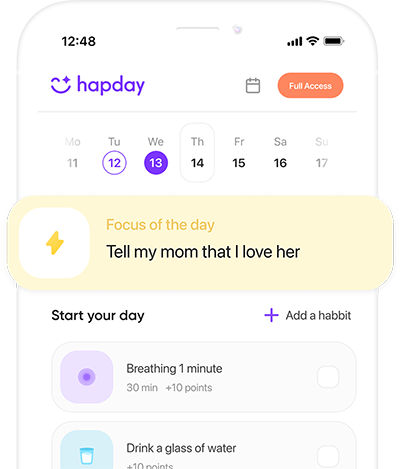Ever tried to focus in today’s whirlwind of chaos? Yeah, me too. It’s tough, right? Especially for those grappling with ADHD (Attention Deficit Hyperactivity Disorder). Unwanted distractions are everywhere, popping up like wildflowers in spring. But hang on—there’s a tool that might help: mindfulness. Not just some trendy buzzword, but a real, gritty practice that can help manage ADHD symptoms. It might sound wishy-washy, but integrating mindfulness into daily life could seriously boost concentration and help folks thrive. So, let’s take a spirited dive into how mindfulness can aid Gen Z and Millennial women riding the ADHD wave.
Table of Contents
- Understanding ADHD and Mindfulness, Unplugged
- The ADHD Brain and Mindfulness: What’s the Link?
- Taking Mindfulness for a Spin: Here’s How
- Daily Mindfulness: A Life-Size Dollop
- Hurdles and Things to Ponder
- Science Backs It: Mindfulness Rocks
- Closing Thoughts
Understanding ADHD and Mindfulness, Unplugged
According to a not-so-recent-and-probably-still-relevant fact, ADHD affects about 4.4% of adults in the U.S. The symptoms? Classic—like not being able to pay attention, hyperactivity, and impulsivity. It’s a big hurdle, both at home and work. Sure, medication and cognitive behavioral therapy are staples on this journey, but mindfulness? It’s like that underrated tool in the kit that gets the job done quietly but powerfully.
So, what’s mindfulness anyways? It’s the art of being in the moment—right here, right now. Capturing the ebb and flow of thoughts without judgment. I read a piece from the Journal of Attention Disorders that highlighted how mindfulness can smooth out those often jagged ADHD edges. Participants showed marked improvements in attention, emotional control, and impulse moderation. A win-win scenario.
The ADHD Brain and Mindfulness: What’s the Link?
Brains with ADHD often fumble with executive functions. Making plans, organizing stuff, managing time—it’s like trying to juggle water! Mindfulness, however, has a knack for recalibrating the brain. An eye-opening study in NeuroImage found that mindfulness ups the gray matter game in brain areas tied to attention and emotion control. This translates to better mental command and fortitude. Pretty nifty, don’t you think?
Taking Mindfulness for a Spin: Here’s How
- Mindful Breathing
- Technique: Slip away to a quiet nook and hone in on your breath. The in-and-out, slow and steady. Drift off? Gently steer back.
- ADHD Boon: It’s all about lessening anxiety and stretching out that often fractured attention span. A meta-analysis in Psychological Bulletin? It vouched for breathing as a way to sharpen cognitive skills and settle those emotional squalls.
- Body Scan Meditation
- Technique: Recline comfortably. Scan from head to toe, acknowledging all sensations—no judging allowed.
- ADHD Benefit: This enhances an awareness of your body, easing tension and amplifying relaxation. The Journal of Clinical Psychology swears by it for increasing sensory sensitivity and emotional harmony.
- Mindful Walking
- Technique: Slow it down when you stroll. Feel every step, soak in the surroundings.
- Plus for ADHD: It’s a perfect dance between physical activity and mindfulness. The combo’s a boon for hyperactives among us. Studies in Cognitive Therapy and Research hint at sharper focus and better impulse control from this simple routine.
Daily Mindfulness: A Life-Size Dollop
- Start Tiny
Kick things off with bite-sized, 5-minute sessions, and slowly tick the clock upwards. The key is keeping at it, even if it’s just a sprinkle of mindfulness here and there. It all adds up.
- Embrace Tech
Apps—like Headspace and Calm—gear mindfulness towards ADHD rockstars. They act as your virtual guardian, keeping track and spurring you on.
- Mindful Journaling
Etch down your thoughts and experiences with this practice. Mull over those words. This reflection will help you see how mindfulness evolves your ADHD journey. Can’t deny the satisfaction from flipping through a journal, right?
Hurdles and Things to Ponder
Let’s be real: mindfulness isn’t a cure-all—far from it. Some folks might find it particularly tricky to quiet the mind initially (been there, done that). Remember, it takes patience. And remember, mindfulness works best when paired with other ADHD treatments.
Science Backs It: Mindfulness Rocks
Science keeps on waving the pom-poms for mindfulness in managing ADHD. There’s a study in Behavioral and Brain Functions that showcased that participants in an 8-week mindfulness stint noted notable strides in attention and decision-making powers compared to those who skipped it. The Mindfulness journal also spilled the beans about reduced ADHD red flags and heightened life quality among regular practitioners.
Closing Thoughts
Tapping into the magic of mindfulness could very well open the door to new vistas for those with ADHD. Mindful breathing, body scans, mindful walking—it’s like hitting the refresh button for the mind. Gen Z and Millennial women stepping into this practice can start seeing challenges transform into stepping stones onto personal success. Ready to embrace the art of mindfulness? Start today—it’s only a few mindful steps away. And hey, if you’re hunting for more tools to bolster your own ADHD adventure, pop by Hapday.
There’s a whole mindful world waiting out there, ready to be explored. Let’s dive in!

